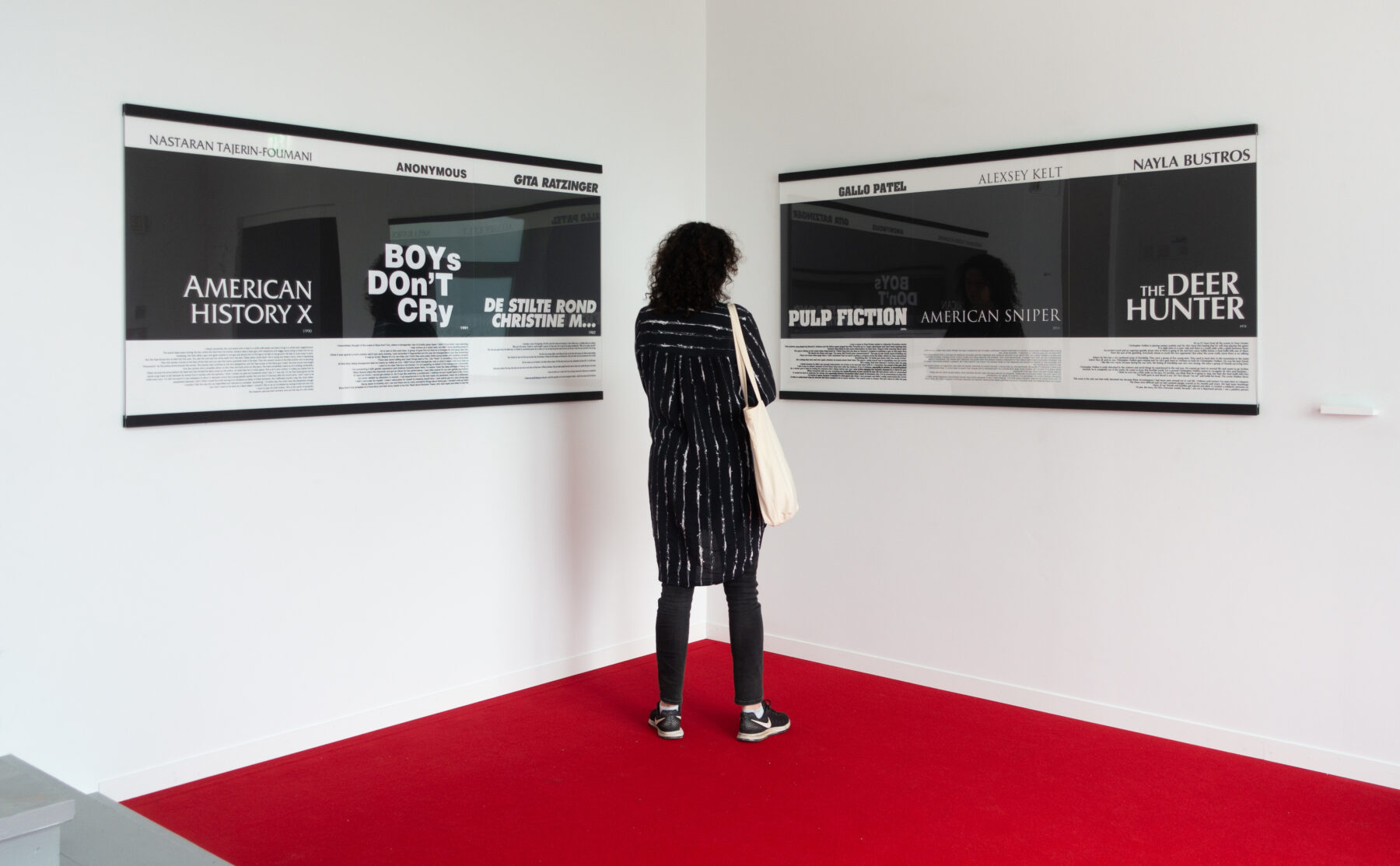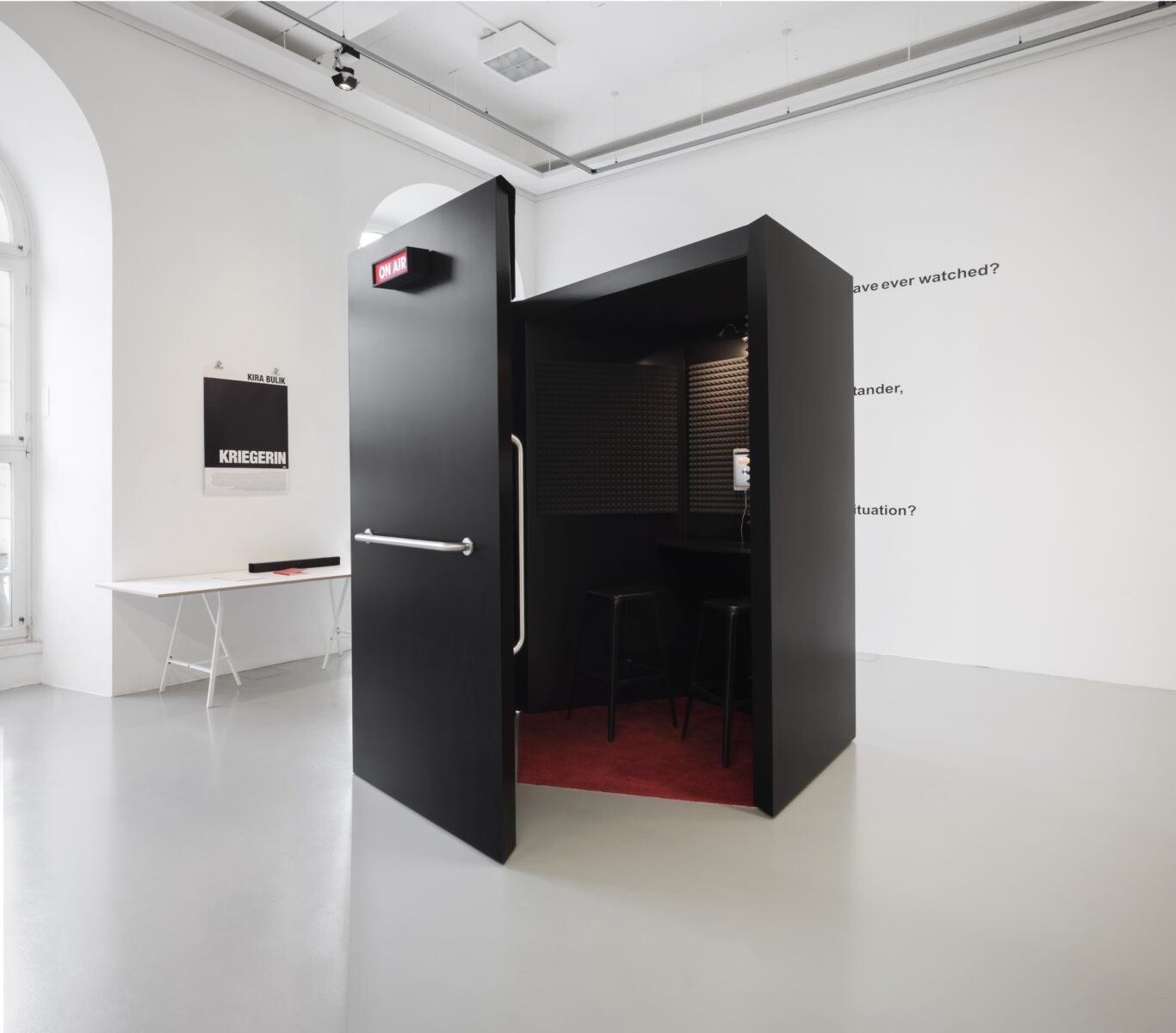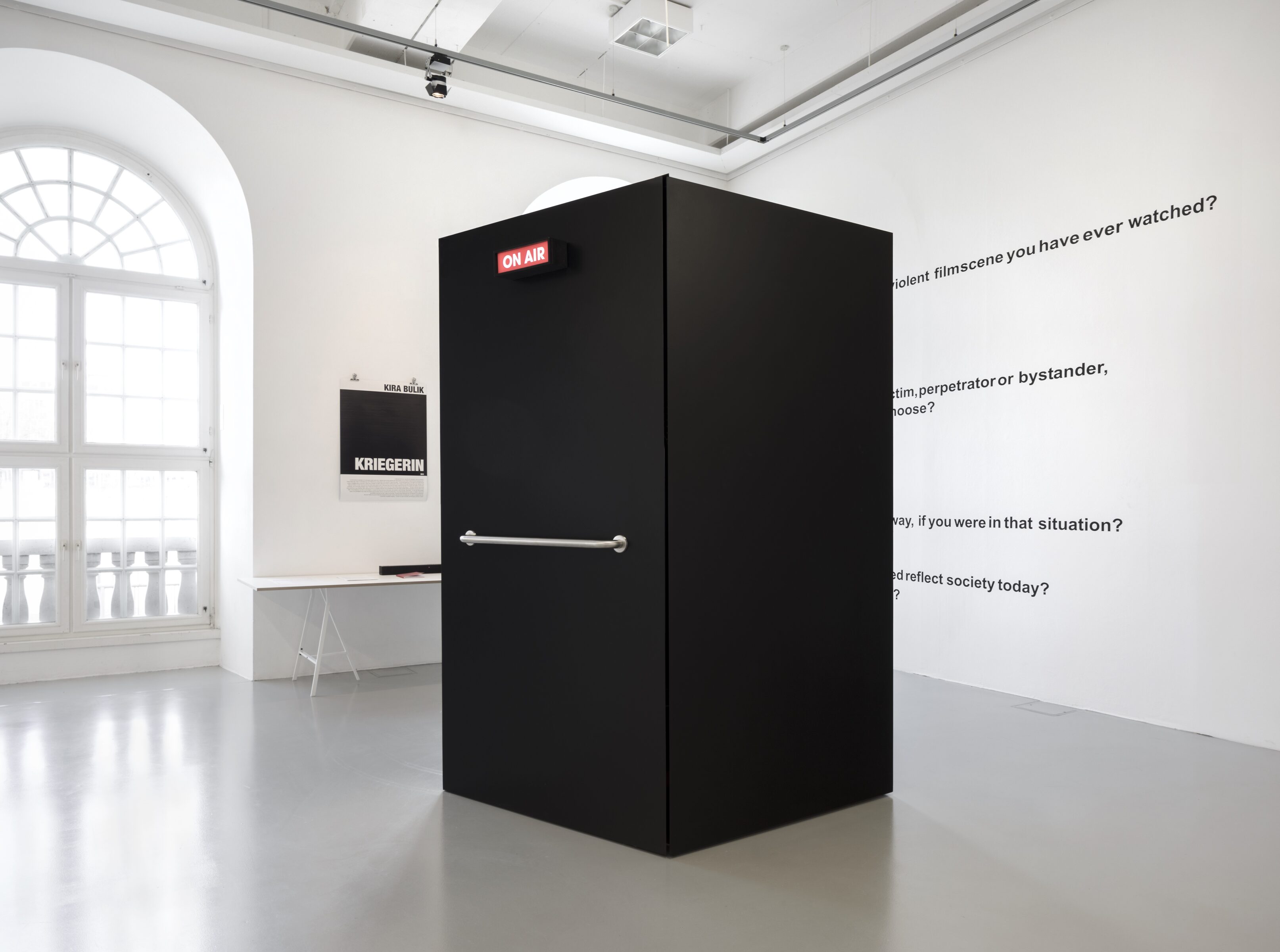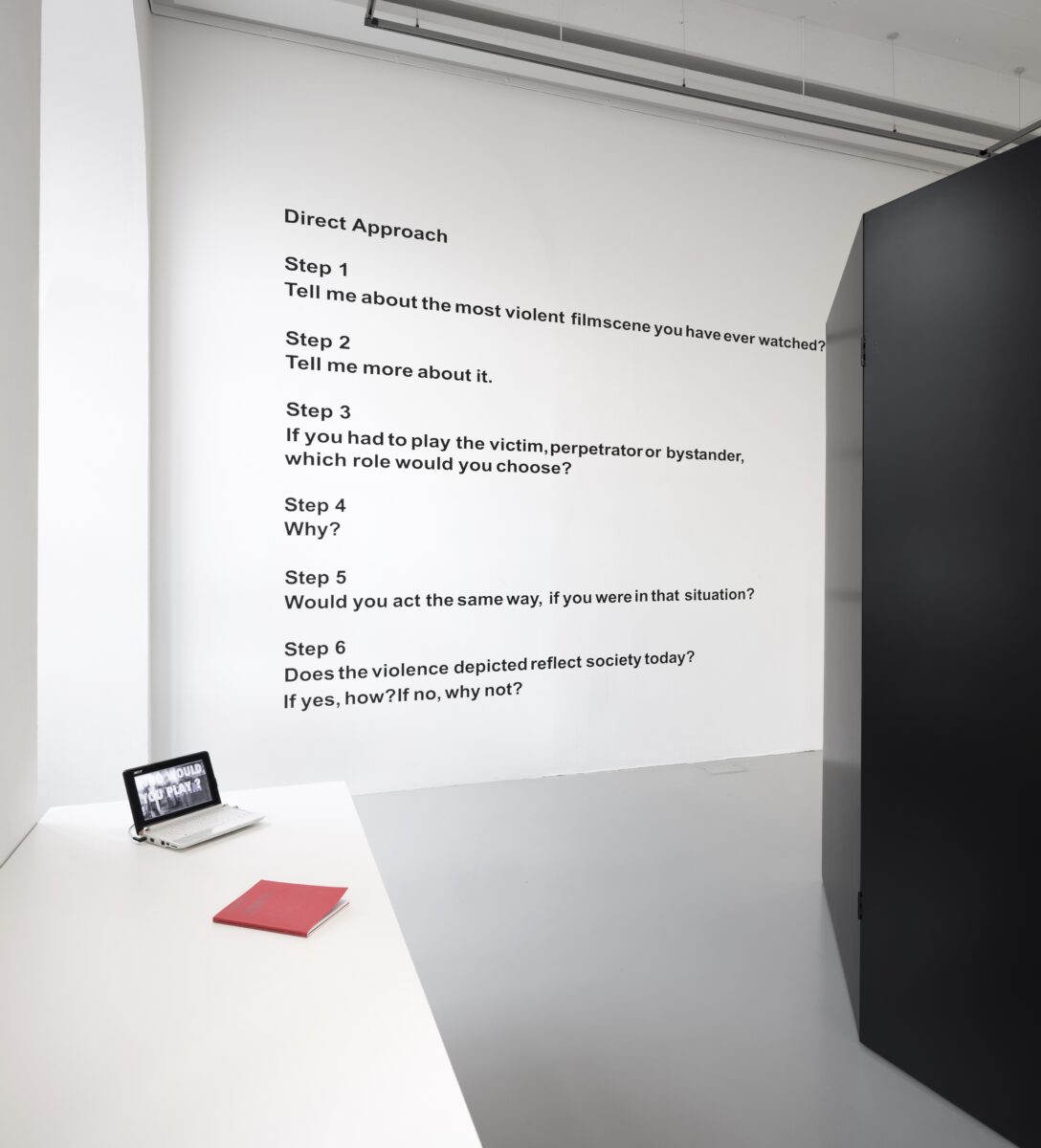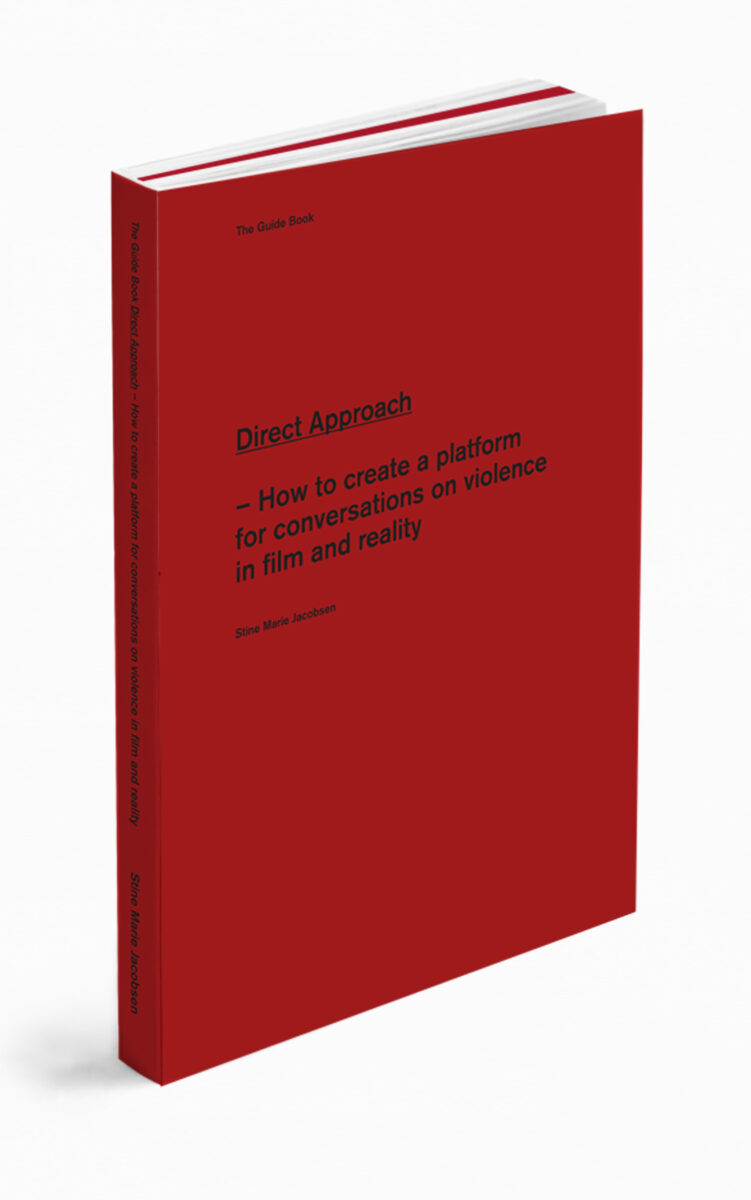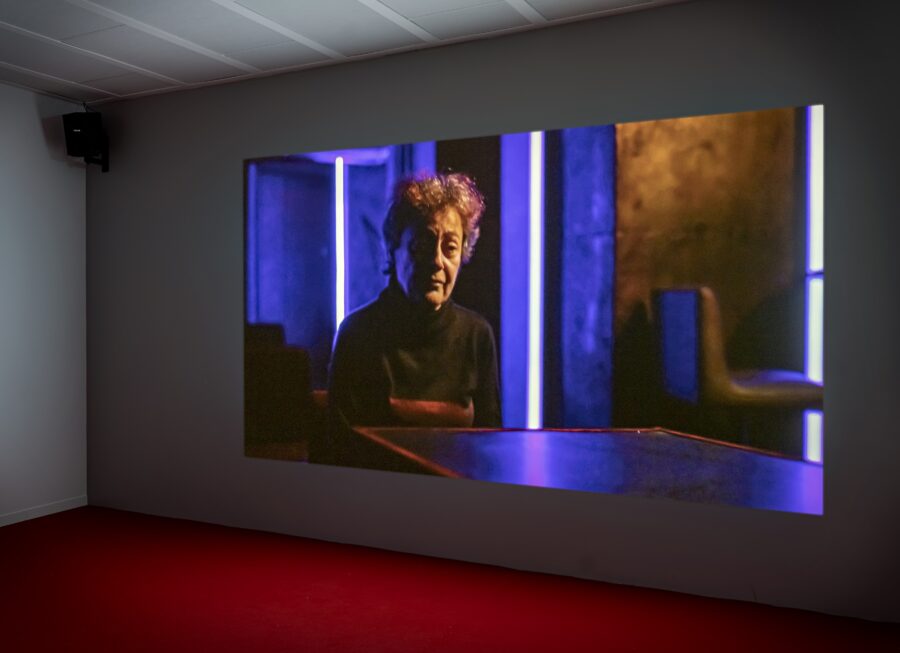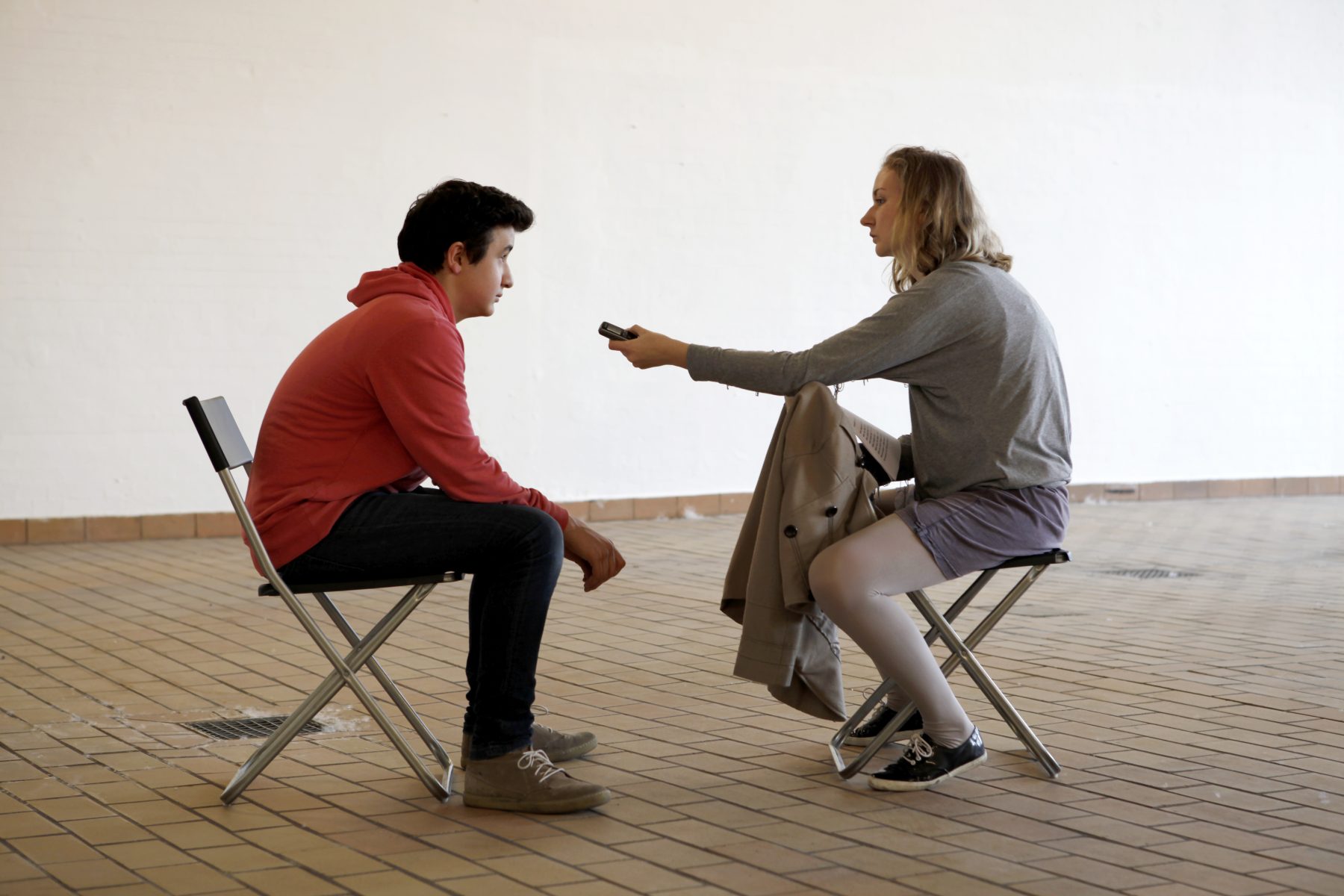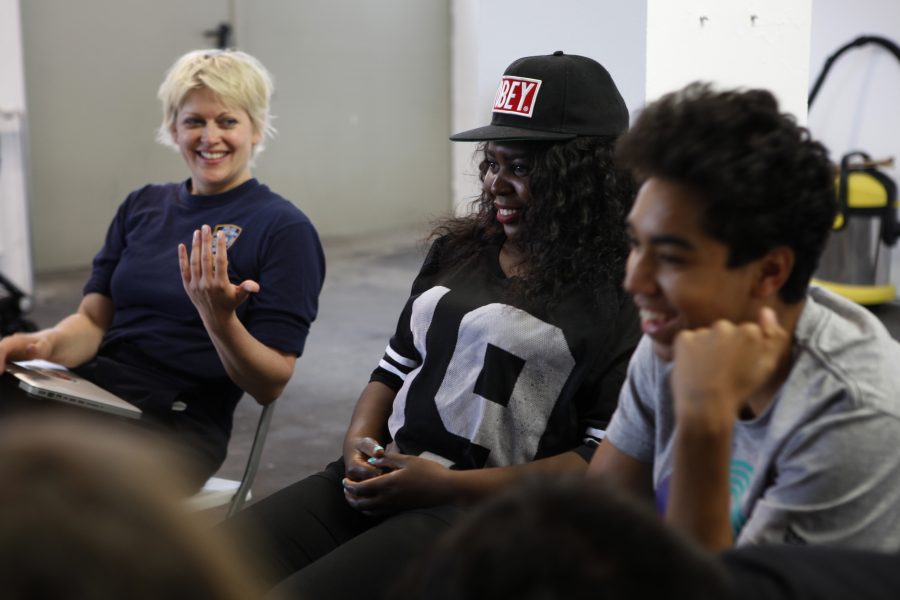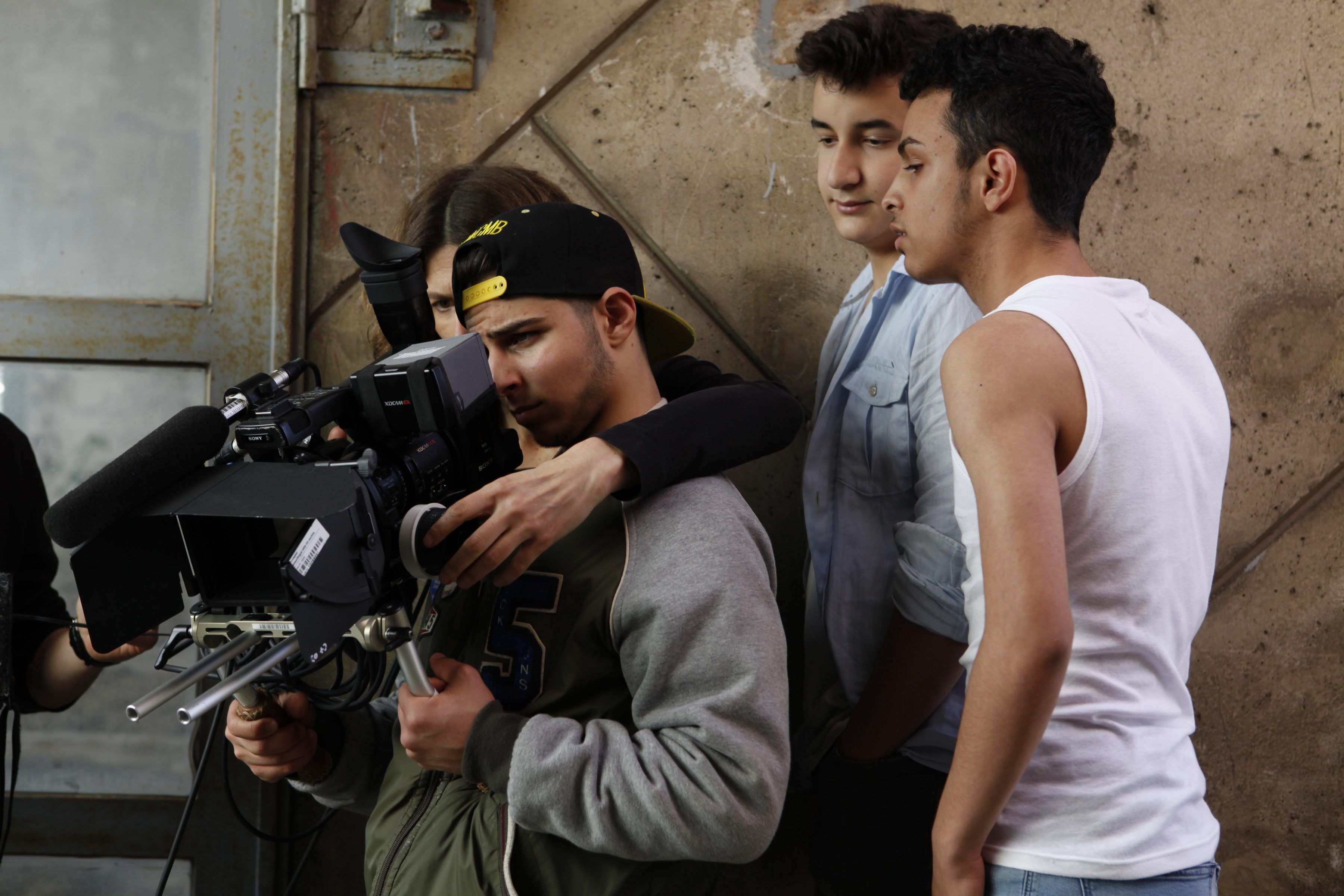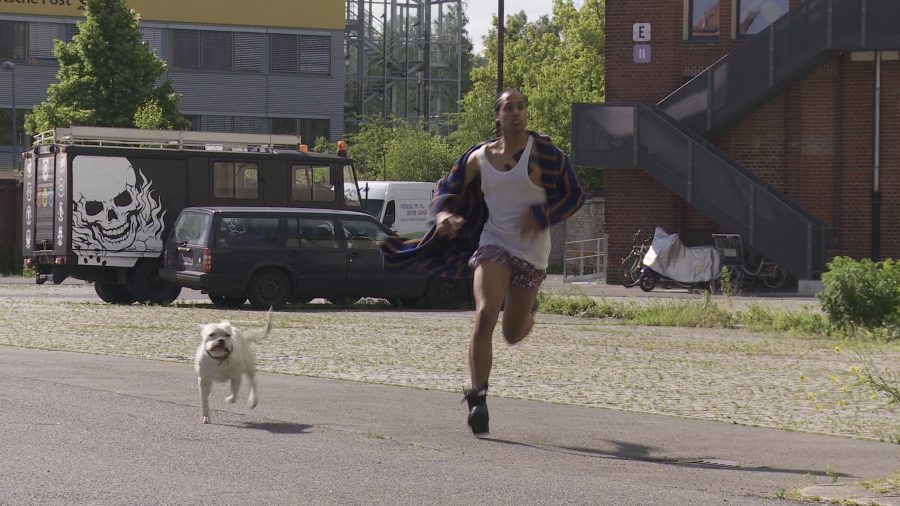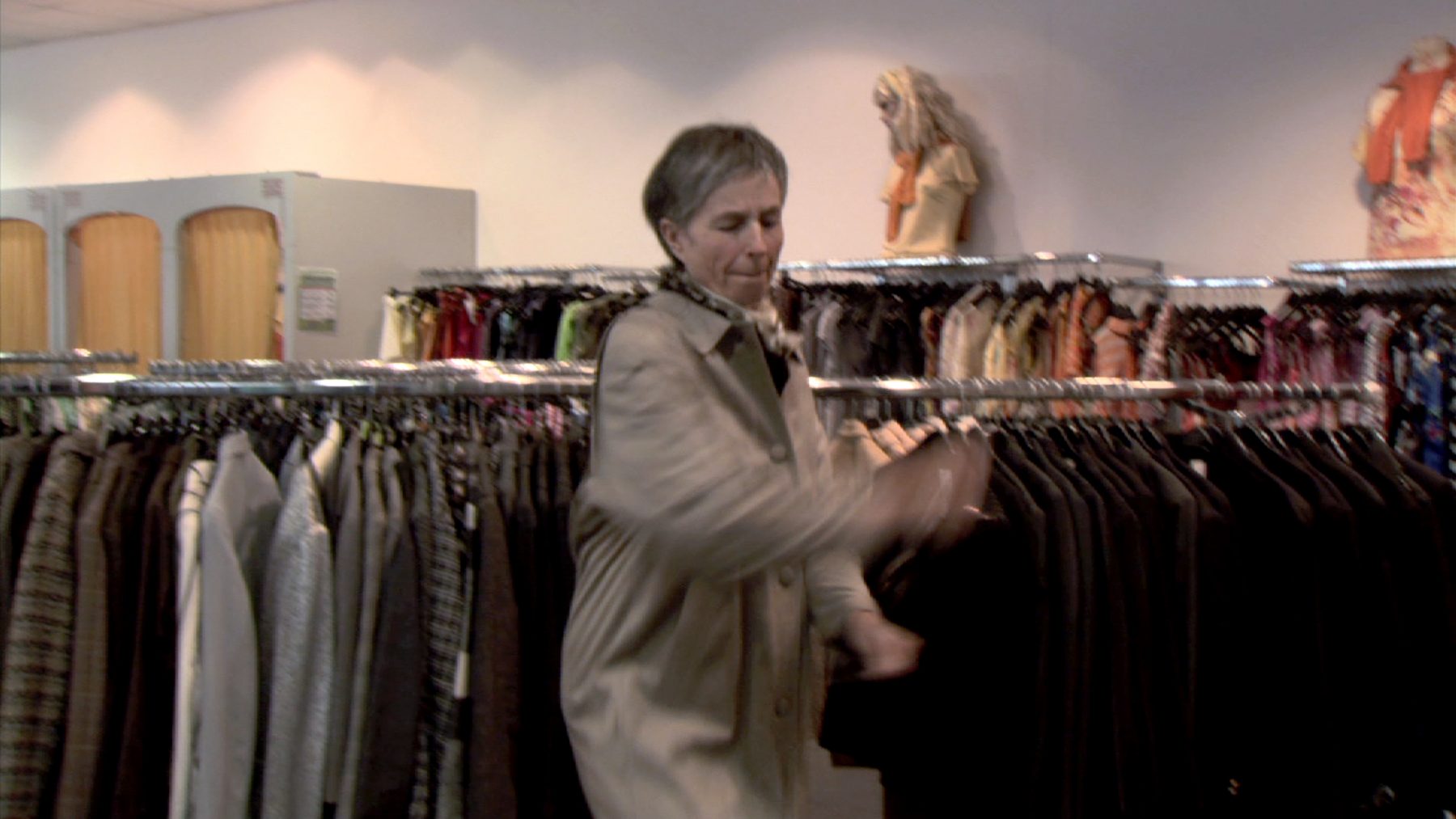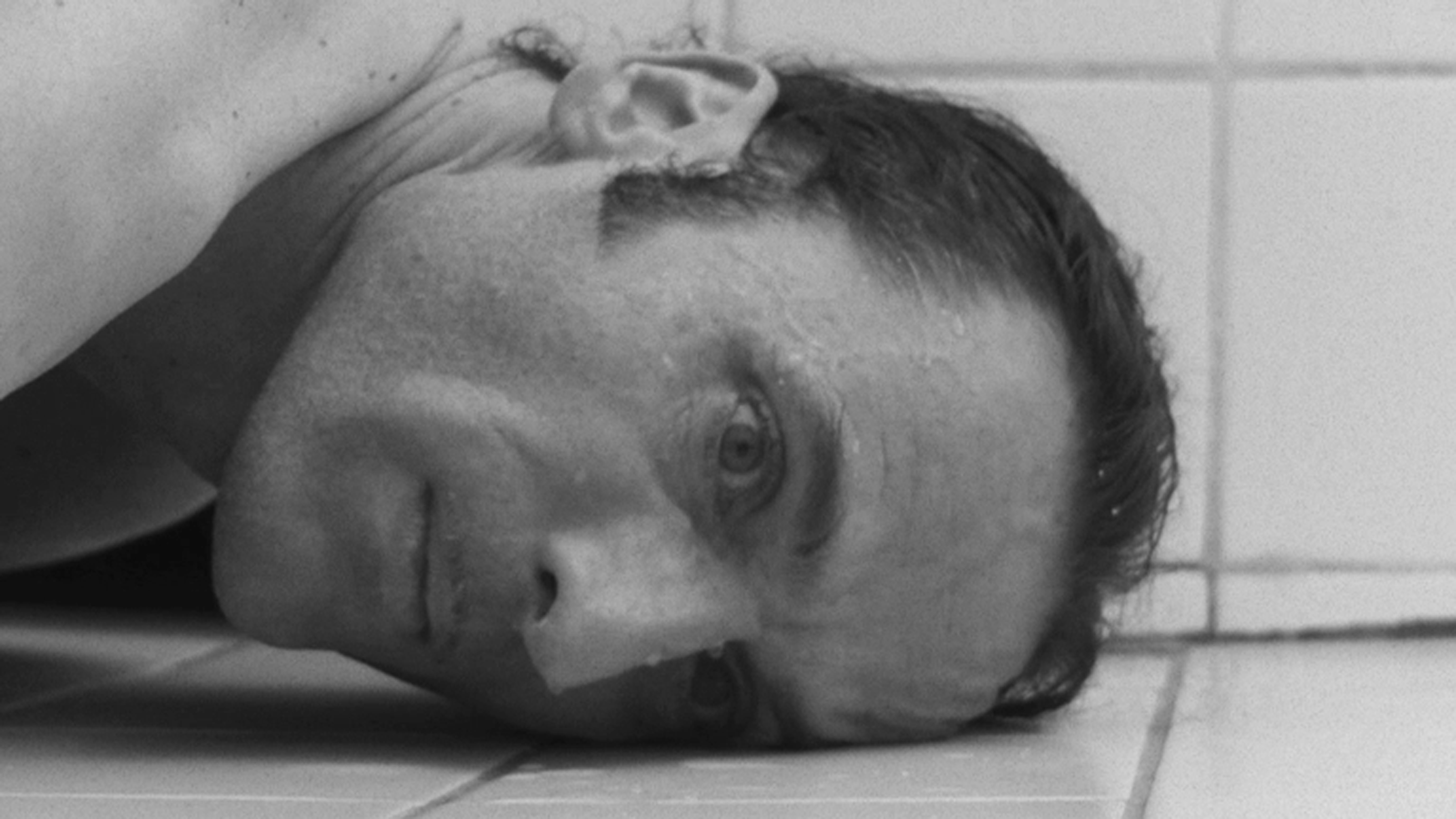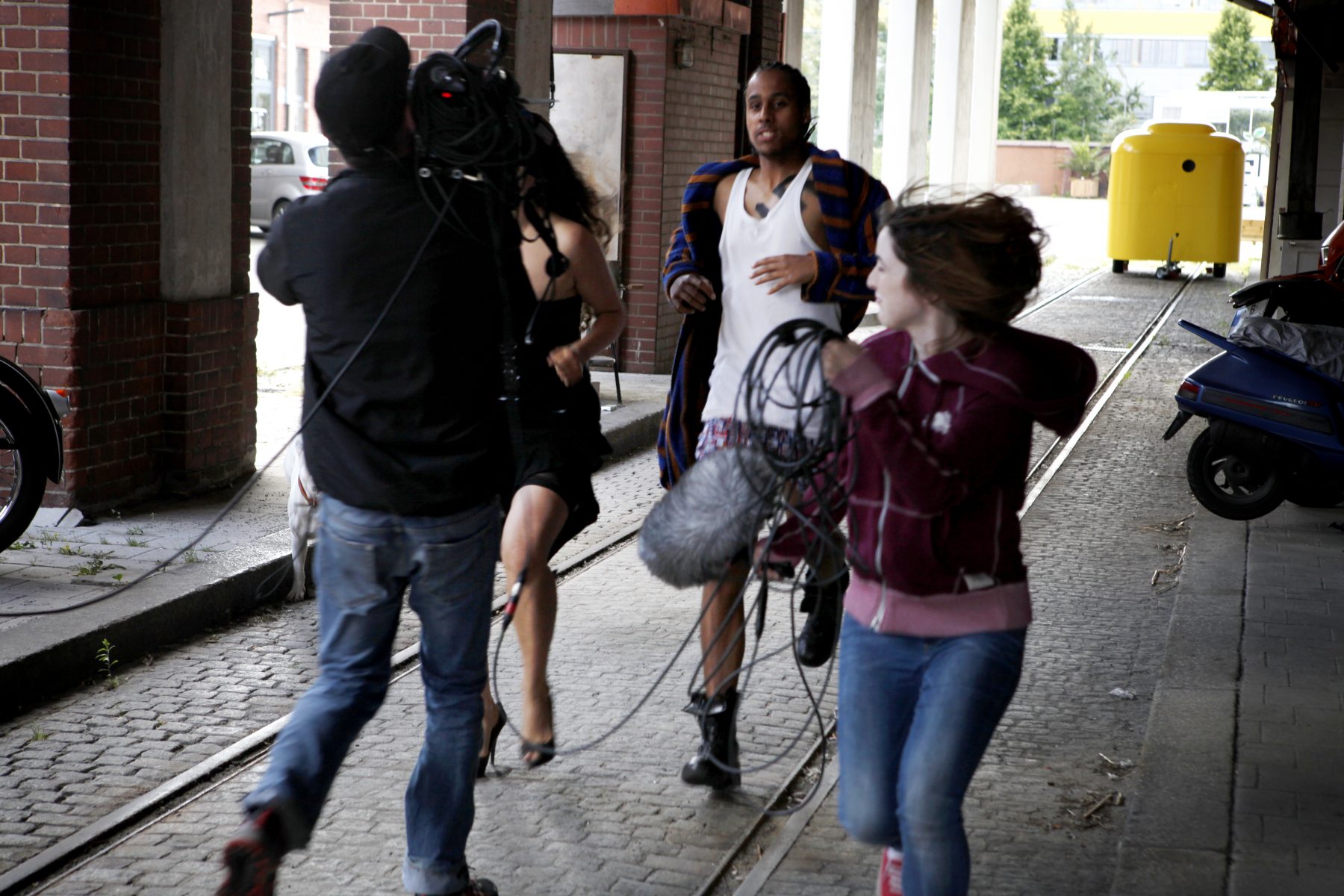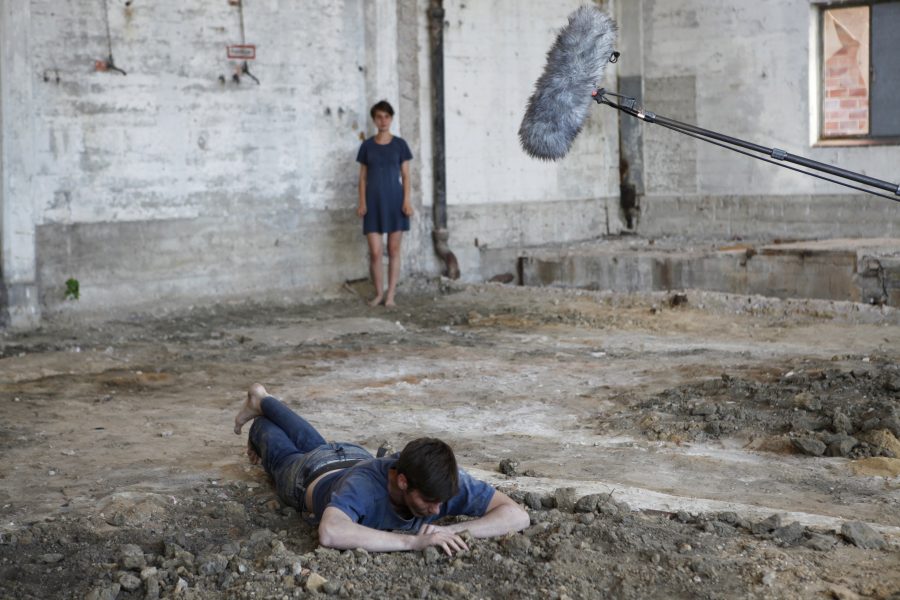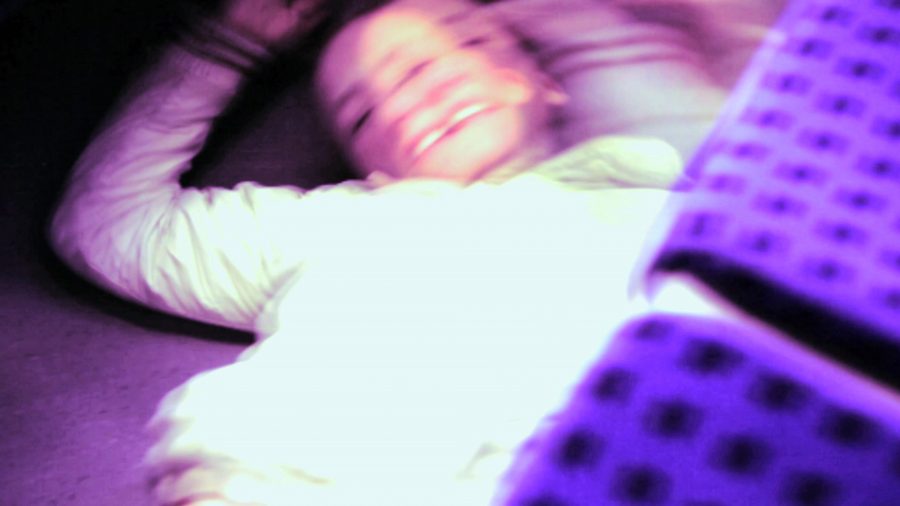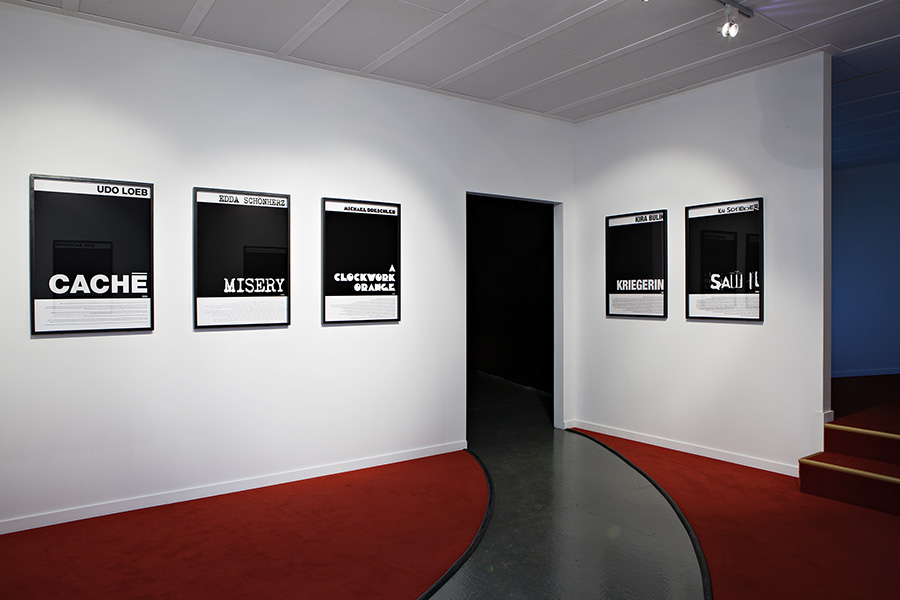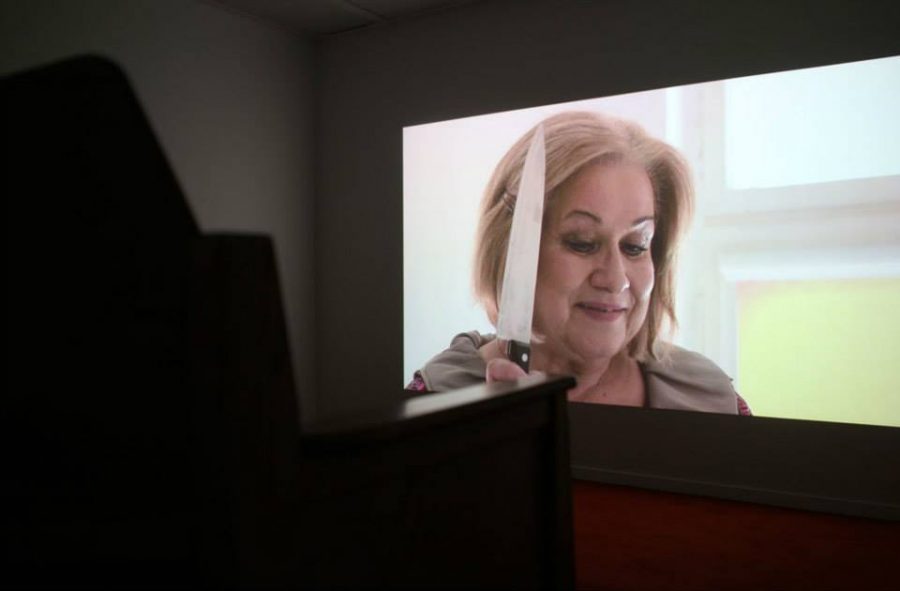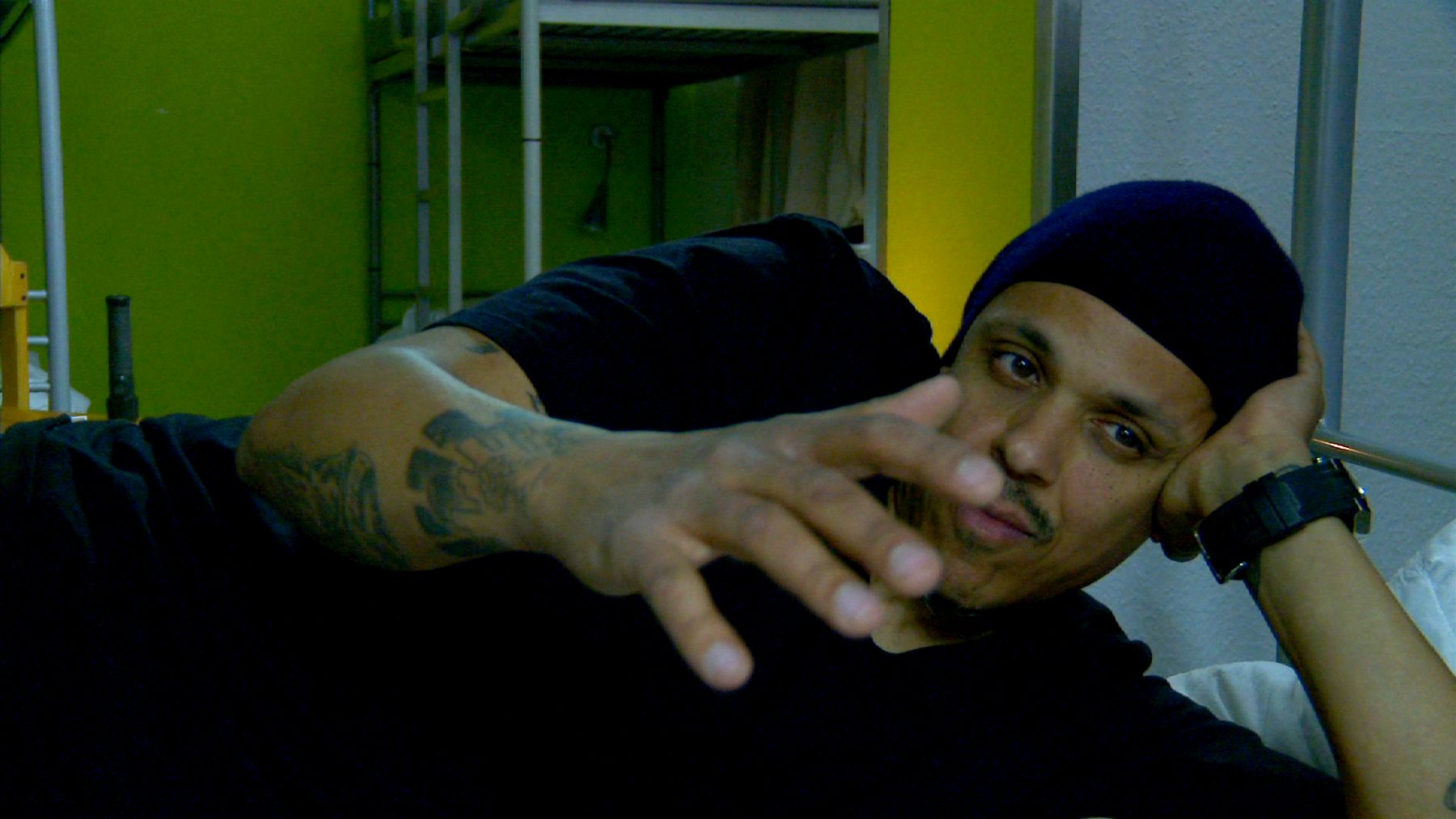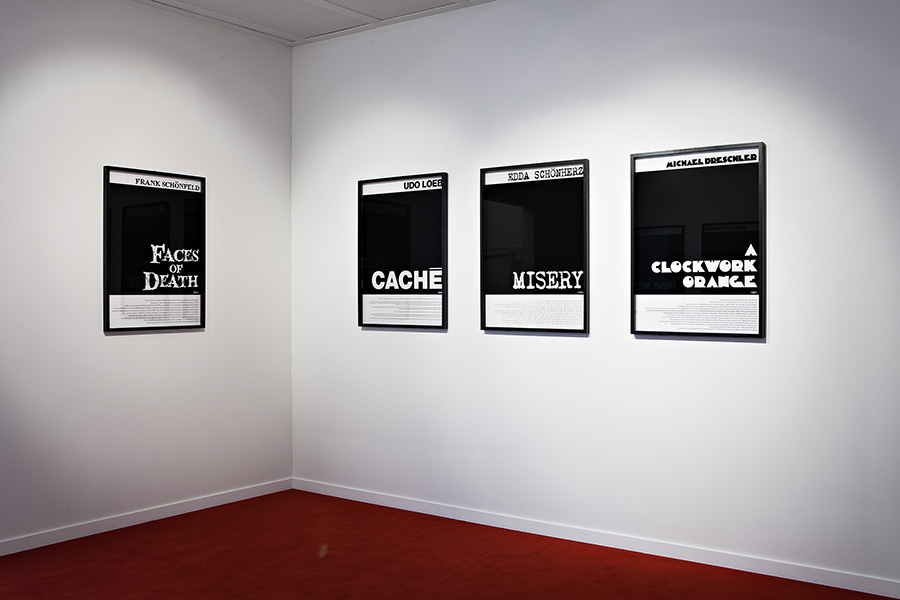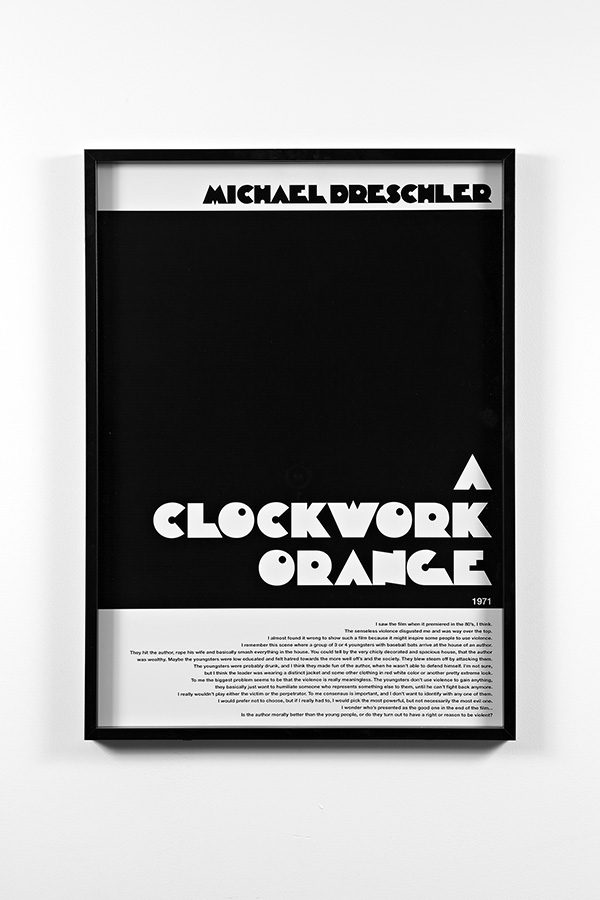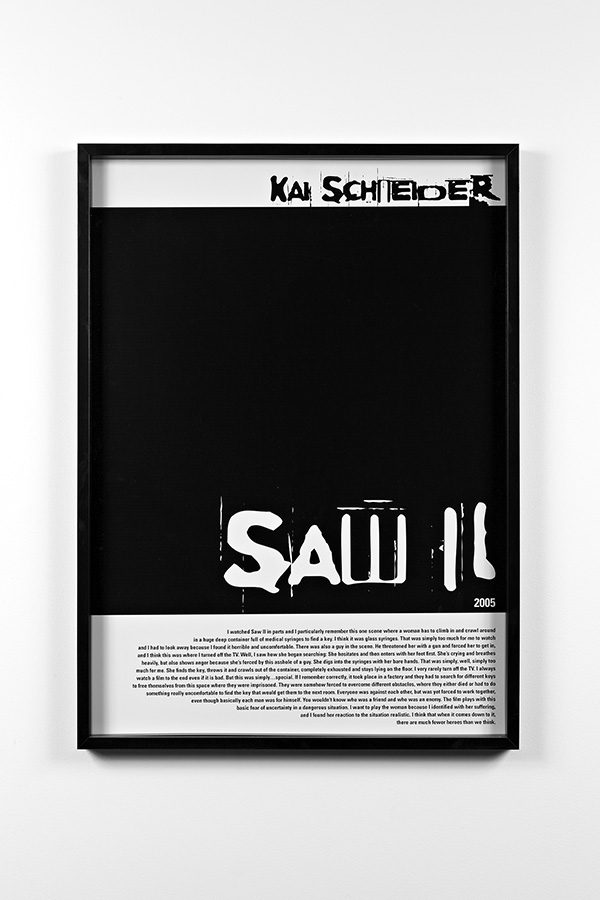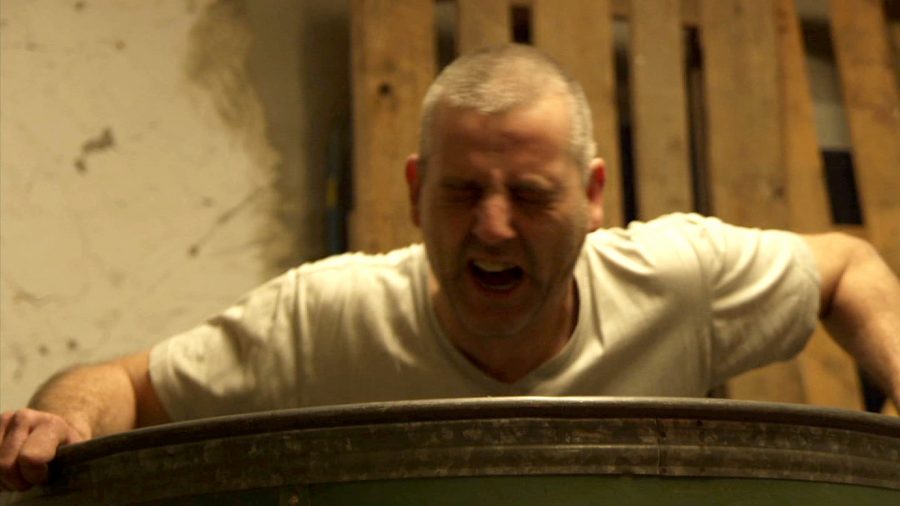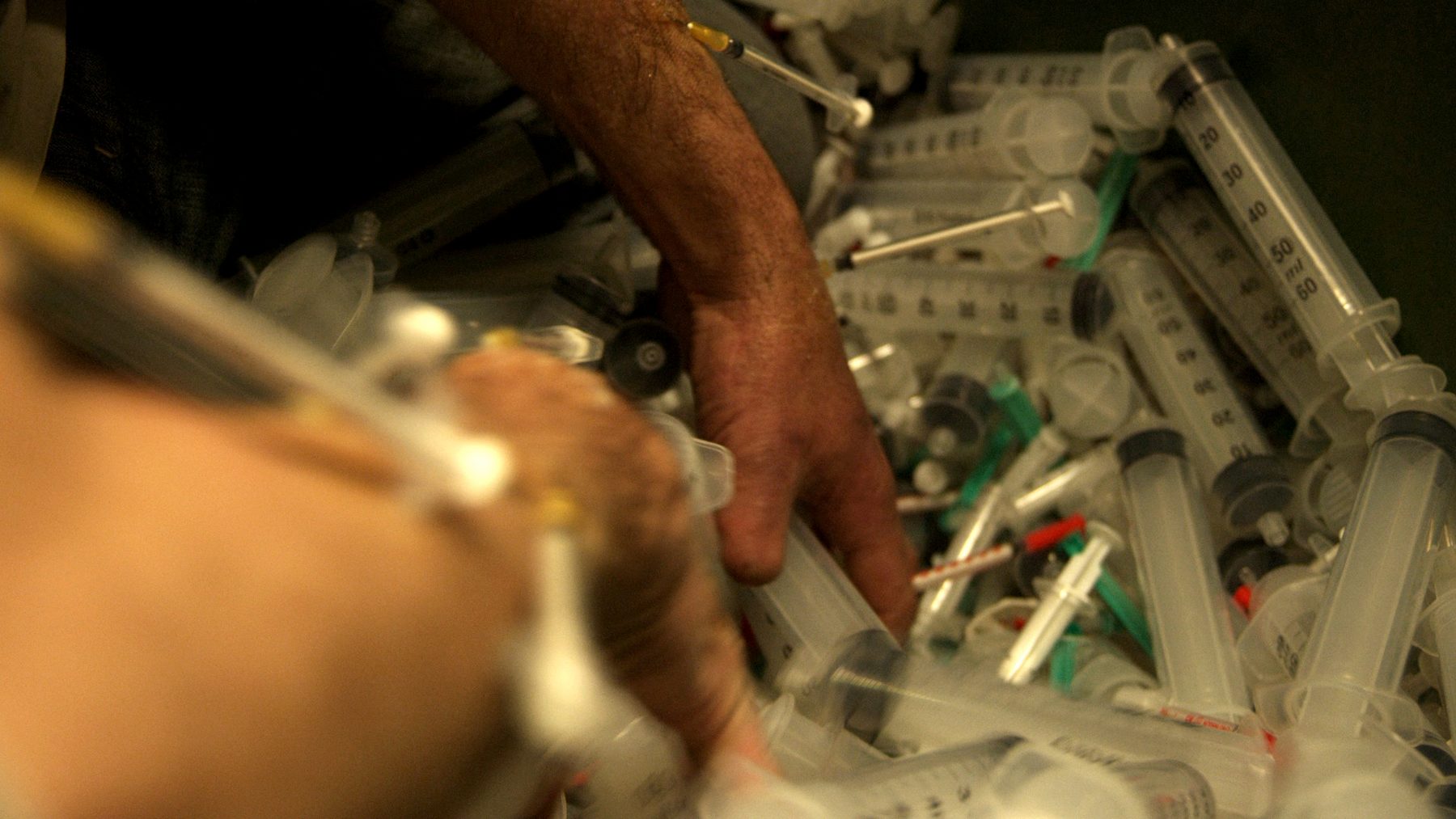Direct Approach
Victim, perpetrator or bystander? It is not easy to locate the notion of violence in any culture. There is actually no direct way to approach it. Violence is often taboo or part of the collective unconscious in a given culture. The experience and judgment of different forms and mechanisms of violence is in other words a sensitive subject to map out. Direct Approach (2012-) is a participatory art project that has an outcome in the form of a film series – it aims at mapping civilians’ relation to violence through their referencing, identification with and reenactment of self-selected scenes from violent horror movies. Packaged as fiction, the subject is more approachable.
→ Tell me about the most violent film scene you have ever watched.
In the process of reproducing the films, the artist asks people on the street, e.g. in Berlin and now also globally (the project has been invited to a series of cities) to tell her about the most violent film scene they have ever seen. Eventually, when the person has explained about the scene, the artist invites the person to choose a role in the scene – victim, perpetrator or bystander – and to reenact the scene in a similar location to the one in the film, with a professional film crew. Many people agree to this. They enact a chosen role alone, without other actors.
The process of creating this project is just as important as the result. What the artist collects throughout the process of making a Direct Approach film is access to the way media images (here of violence) are stored in individual and collective memory, how these influence us and our ways of identifying with people and acting in reality.
The participation in the project often has a great impact on the participants. They can participate anonymously, exploring their relation to violence indirectly, through fiction.
Here is a quote from the interview that Jacobsen has carried out with each of the actors after filming, as a basis for the film posters. The female amateur actress (and former Stasi prisoner) explains about her role as the evil nurse, perpetrator, in the 1990 film Misery, an American psychological thriller based on Stephen King’s 1987 novel of the same title.:
“The nurse ties up the author and breaks his legs to stop him from running away. To me that’s horror at its most extreme. And that is why I’m all for banning these violent movies that the young are consuming. Of course it will be incredibly difficult to enforce, but we are committing a crime if we don’t censor them. (…) Horror movies are crimes committed against our youth. They make killing seem natural after a while and it degrades society. (…) I remember the scene where the man is preparing his escape, but when he sees her returning in her car, he knows he has to call it off or else face horrible consequences. How can a woman be so cruel! It’s terrible! It was just like this with the Stasi. I did not let myself be intimidated. There were situations when I felt powerless, but I did not let them frighten me. I told myself I would beat them, I would not let them beat me. This makes you strong.” (Stine Marie Jacobsen, Direct Approach, Edda Schönherz, film poster, 2013)
